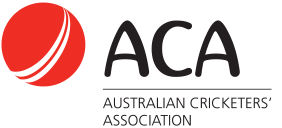Seeing through the haze on air pollution and cricket
12 December, 2019
Air pollution was an issue that came to prominence earlier this week with the persistent haze caused by devastating bushfires blanketing the SCG during New South Wales Sheffield Shield game against Queensland.
This resulted in several players speaking with the ACA around air quality. The official process remains that there is no Cricket Australia air quality policy, although one is being developed by the ICC. In its stead are Guidelines for ICC Match Officials on Air Pollution. Therefore currently it’s the role of an umpire or match referee to make a call as to whether play is suspended due to poor Air Quality based on their assessment at the time (under General Safety Playing Conditions).
Last week, in anticipation of playing conditions impacted by smoke haze, ACA’s General Manager - Cricket Operations and Player Relations, Brendan Drew, initiated discussion with Cricket Australia’s Operations and Sports Science Sports Medicine Staff. Brendan was informed by John Orchard, Cricket Australia’s Chief Medical Officer that he was the doctor covering the game and would provide daily updates. John identified a recent precedent at a Second XI game where a doctor was present and, on their advice, umpires delayed the start of play on two of the four day match due to poor air quality. Having doctor at Second XI game was a New South Wales trial, but it proved to be very useful.
Day one of the Shield game at the SCG on 7 December commenced with air quality at a ‘moderate’ rating in regards to the ICC guidelines. Day four was the worst of any day with captains told the air quality rating reached an ‘unhealthy’ Air Quality Index (AQI) rating of 170*. On doctors’ advice, no management strategies needed to be implemented.
Both captains were comfortable with this advice but were of the opinion that playing conditions were uncomfortable.
This is an issue the ACA will continue to monitor and provide input to on behalf of the players and work with Cricket Australia to develop an Air Quality policy.
The AQI provides a comparison of air pollutants, standardising measurements of ozone, carbon monoxide, sulfur dioxide, nitrogen dioxide, airborne particles and visibility into one easy-to-understand index.


